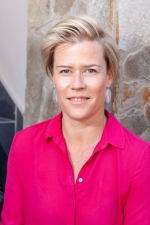5G technologies: what you need to know.

The global rollout of the 5G network promises to be transformative, with unprecedented levels of speed, capacity and potential – but the interdependent nature of the technologies involved also brings a proliferation of risks. Rishi Baviskar, Oliver Lauxmann, jody Yee of Allianz Global Corporate and Specialty (AGCS) experts discuss the opportunities and the threats that will face risk managers as the digital revolution progresses.
Engineers solve a mystery on the path to smaller, lighter batteries.

Branchlike metallic filaments can sap the power of solid-state lithium batteries. A new study explains how they form and how to divert them. David L. Chandler, Massachusetts Institute of Technology describes how a discovery by MIT researchers could finally unlock the door to the design of a new kind of rechargeable lithium battery that is more lightweight, compact and safer than current versions, and labs round the world have pursued that for years. The key to this potential leap in battery technology is replacing the liquid electrolyte that sits between the positive and negative electrodes with a much thinner, lighter layer of solid ceramic material and replacing one of the electrodes with solid lithium metal. This would greatly reduce the overall size and weight of the battery and remove the safety risk associated with flammable liquid electrolytes.
In conversation with Dr LeeAnne McKinnell, managing director of SANSA Hermanus

South Africa has a new 24-hour, state of the art regional space weather centre in Hermanus. The Department of Science and Innovation (DSI) has made huge investments in establishing a world-class space weather capability that will not only benefit South Africa, but also the rest of Africa. The department’s entity, South African National Space Agency (SANSA), developed the new capability. SANSA has been operating a space weather centre for the past ten years, with limited focus. It has worked on monitoring the sun and its activity, and has been providing space weather forecasts, warnings, alerts and environmental data on space weather conditions. The operational capability has been developed over the past three years and to date, the DSI has invested over R70 million for the establishment of the 24/7 space weather capability. Dr Lee-Anne McKinnell explains its significance for South Africa.
Connectivity for all is a driver for job creation and economic development

Telecommunications have proven to be a lifeline for keeping many businesses running during the pandemic-induced lockdowns. Internet access is equally critical for growing our economy and the overall progress of the fourth industrial revolution advancements. Internet connectivity creates jobs. The World Bank states that mobile broadband provides between 2.5 and 4.0 additional jobs for each broadband job. In South Africa, online shopping has created numerous jobs, including the creation of 2,870 new jobs at Checkers Sixty60 alone. Furthermore, increasing broadband connectivity leads to improved economic activities. For example, the International Telecommunication Union (ITU) has estimated that “an increase of 10 percent in mobile broadband penetration in Africa would yield an increase in 2.5 per cent in the gross domestic product (GDP) per capita”. Building broadband internet is like building a network of highways and roads that allow instantaneous access to information, products, services and immediate payments, helping the economy grow, writes Prof Albert Lysko, Council for Scientific and Industrial Research (CSIR)
Go beyond manual IT operations management, compliance and monitoring with automation.


Modern businesses rely on digital technology to survive and thrive. Just as a power failure or dry taps can halt operations, companies rely on digital systems as a utility. But unlike other utilities, these systems have continual
and complex demands that IT teams must administer. Managing servers, databases and applications alongside costs, security and compliance place enormous demands on the time of IT professionals. And these demands grow more complex as digital business systems evolve and expand. Yet many administrators who oversee several, hundreds, even thousands of servers - from on-premises stalwarts to nimble virtual machines - still rely on manual processes
and tools. This approach is draining, inefficient, and ultimately self-de feating. They need a better way to monitor, manage and remediate technology infrastructure. They need TACO writes Tania van Wyk de Vries, Chief Product Officer at Obsidian Systems















